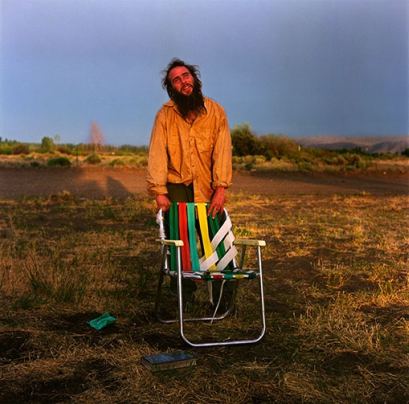Artists come and go from galleries all the time. Usually, it’s the
former dropping the latter. Artists either get
better opportunities or they just can’t stand to work with their
dealers a minute longer.
Gallerists drop artists too, most
frequently because the artists prove unreliable. They miss exhibition
dates and leave the dealer hanging, sell their work on the side in
violation of an agreement or trash talk the dealer on a regular basis.
If a dealer is found chained to a radiator after an S&M session
that went badly, he won’t look kindly on his own artists spreading the
word.
Dealers may feel certain artists have failed to evolve. When Linda Farris
found herself in the position of representing too many artists whom she
felt had not delivered on their early promise, one of the top reasons
she closed her gallery was to avoid cleaning house. She loved all the
artists in her lineup but didn’t necessarily love what their work had
become.
Closing for that reason is rare. Also rare is for
dealers to drop an artist for sales reasons if they continue to
appreciate the product. Bruce Nauman sold badly until fairly recently.
A dealer who let him go due to a paltry economic return (and I don’t
know of one) would be covered in shame. If dealers think a particular
artist is top of the line, they hang in through the thin hoping to help
create the thick.
On the other hand, if the artist’s rise proves
meteoric, the loyal dealer might well be dumped in favor of one who couldn’t have cared less during the lean years. That’s a painful payoff, intolerable in other business
contexts, but gallerists are more than business people. They can never
be great if they keep both eyes on the bottom line.
Enter the
recession. Solid artists sell little or nothing. Trade that was once
brisk has slowed to a trickle. Unless dealers have a trust fund or
represent at least a couple of recession-proof cash cows, the price of
mounting shows they couldn’t have sold in flush times becomes more of a
mental burden.
Case in point: Seattle gallerist James Harris recently dropped Glenn Rudolph. In terms of Northwest art, it’s similar to a New York dealer dropping Nauman twenty years ago.
Rudolph is a poet of the post-apocalypse. He likes to photograph
bad news once the news value has faded and people are making the best
of their diminished circumstances. He favors those who live it up on
the margins of society, in a bizarre social club (the Duct Tape
Warriors in the Kent Valley), the artificial splendor of a suburban
housing development (Kent, again) and his own neighborhood in North
Seattle.

He photographs along the train routes from Portland to
Vancouver and finds landscapes that are more like abandoned still
lifes, nature damaged by human folly.
Other photographers make dirges from such material, but Rudolph’s
version of the down-and-out has a resilient edge, a zany comeback
quality, an exuberance that belies the facts.
When Lisa Corrin was leaving the Seattle Art Museum,
where she’d served as modern/contemporary curator, she said Rudolph had
taken her by surprise. In the age of global communications, she thought
it would be almost impossible for a major artist to fly under the
radar. After seeing Rudolph’s work, she realized it isn’t true.
Glenn
Rudolph is enormously under-recognized. He deals with the subcultures
that inhabit the Northwest and how the region’s social landscape is
changing the natural one. (more)
Harris said the economy is the only reason he parted company from
Rudolph.
I
truly believe in Glenn’s work. He is a Seattle treasure and his
photographs captures a NW sensibility like no one else. I wish I could
afford him the time and the backing that he deserves. If you look at
his gelatin silver prints, both large and small scale you can see the
mastery in his printing technique. What a wonderful way to capture the
fantastic shades of gray of the NW. Unfortunately, it is too hard to do
shows and not make money, not only for me for for him. I feel honored
to have worked with him.
Also missing from the gallery Web site is Patrick Holderfield, but that omission may be temporary. Holderfield appears to be taking a vacation from making art. His personal Web site
no longer carries any of his work. If offers instead two words: NOW
WHAT? If Holderfield answers his own question with new work, Harris
said he’d be happy to return him to the fold, assuming he’d want to
return.
Prior
to the recession, Harris would have given an artist of Holderfield’s
stature time to find a new direction. No longer. Behind the sleek
exterior of many important galleries around the country, there’s a
desperate scramble going on. Although some critics claim a recession
frees the art world from concentrating on money, I think the reverse is
true for galleries. Money buys time and funds the experimental. In its
absence, the bottom line becomes the determining factor.



Great post.
This is depressing. Especially for an artist who does not yet have a gallery in Seattle.
I don’t live in Seattle and rarely have a chance to go to Seattle galleries. But I think if an art dealer really valued an artist he already represented, he’d be steadfast in tough times. Just what did he do for Glenn Rudolph, who he professes to think so highly of? I’m not impressed by James Harris. Where I live, dealers are made of sterner stuff. Maybe this is ok by Seattle standards.
Anita: I do live in Seattle. The James Harris Gallery is vital. I’m not as willing as you to judge decisions dealers make right now, when collectors are no longer collecting.
Any gallery that can’t sell Glenn Rudolph in Seattle isn’t trying very hard. Glenn Rudolph is Seattle.